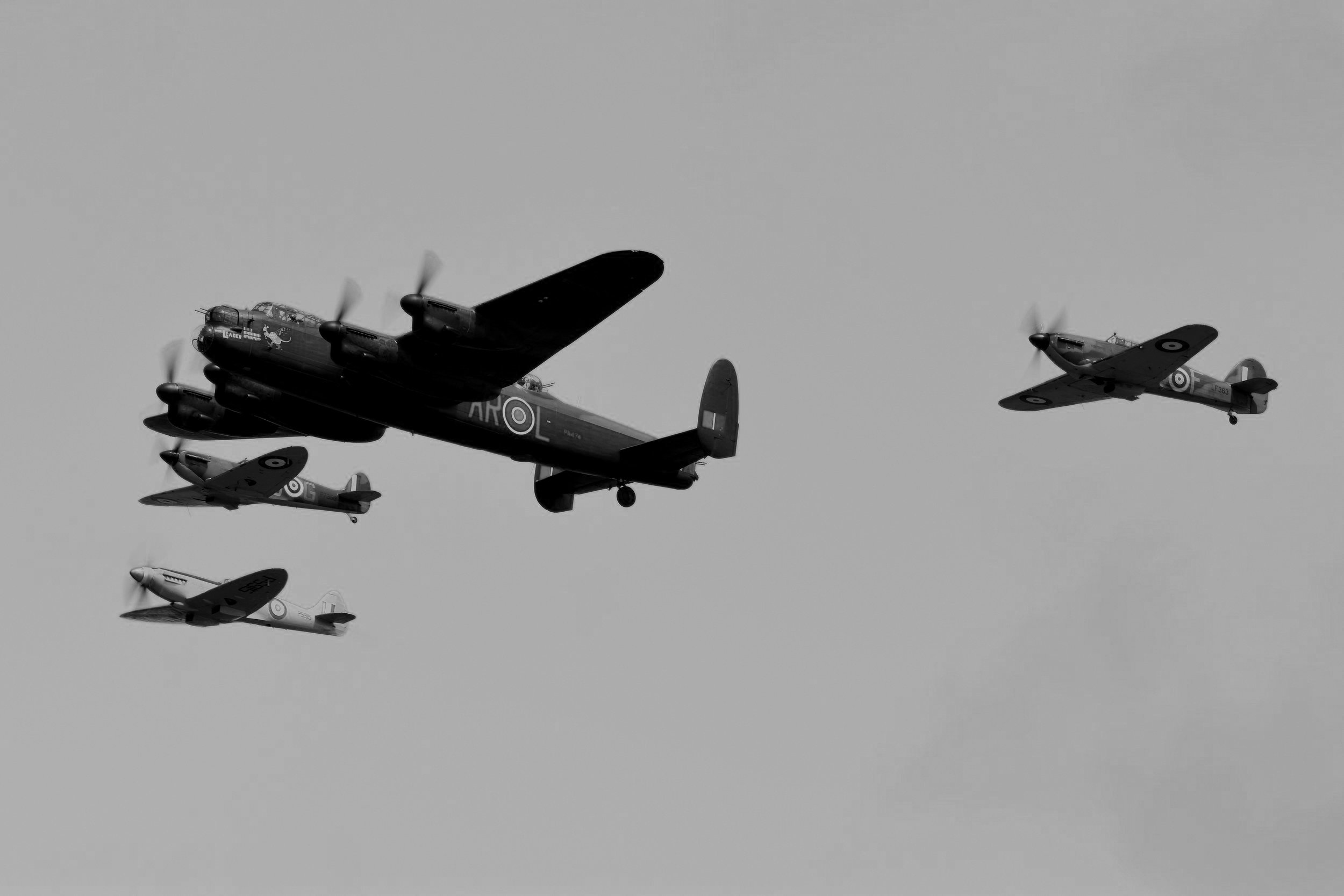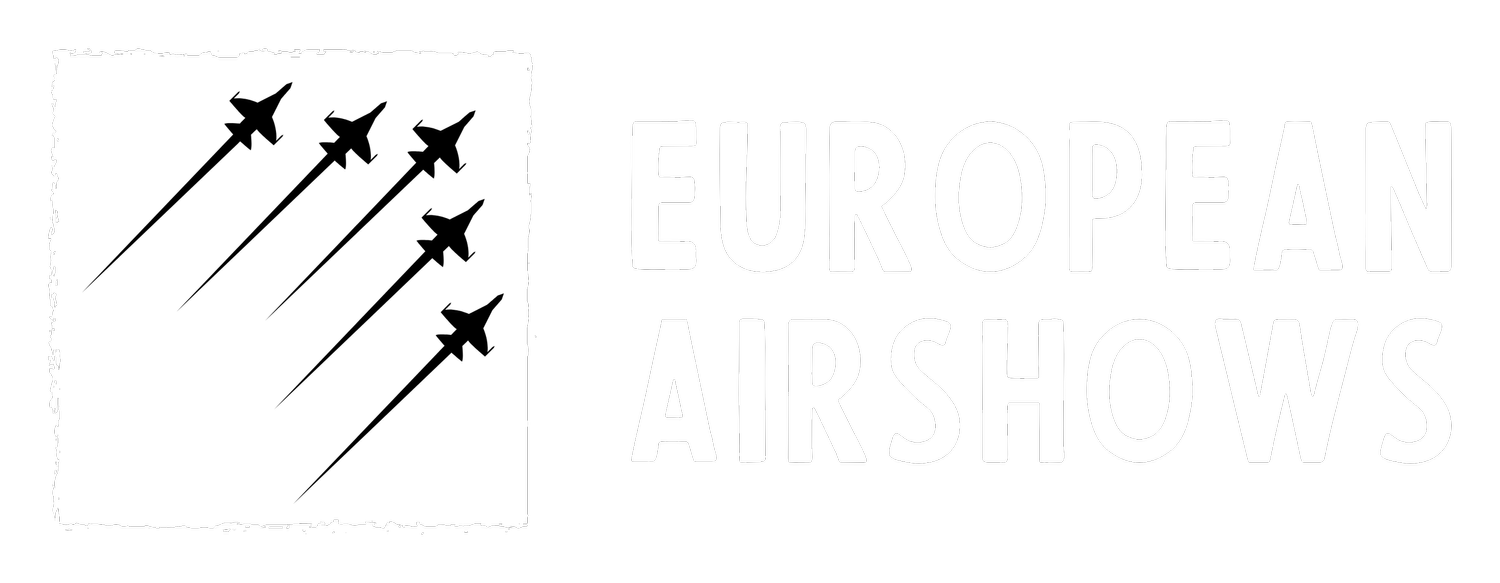
April 1 / Royal Air Force Founded
Founded 1 April 1918
Royal Air Force
The Royal Air Force, or RAF, has a history as thrilling as a dogfight at 30,000 feet and as groundbreaking as the sound barrier being shattered. From its daring pilots to its cutting-edge aircraft, the RAF has been at the forefront of aviation for over a century. Buckle up, because we’re about to take a high-flying journey through the history of the world’s oldest independent air force—a story of courage, innovation, and a whole lot of British grit.
The Birth of the RAF: A Wartime Revolution
Picture it: 1918, the final year of World War I. The skies over Europe are buzzing with rickety biplanes, and Britain realizes it needs a better way to fight in the air. Up until then, the British military had two separate air arms—the Royal Flying Corps (RFC), tied to the Army, and the Royal Naval Air Service (RNAS), linked to the Navy. These two were like siblings fighting over the same toy, each wanting control of the skies. So, on April 1, 1918, the British government said, “Enough!” and merged them into one unified force: the Royal Air Force. It was the world’s first independent air force, and it was about to change the game.
Leading this new venture was Hugh Trenchard, a gruff, no-nonsense officer who earned the title “Father of the RAF.” Trenchard wasn’t just a bureaucrat—he was a visionary. He believed the RAF could do more than just support troops on the ground or ships at sea; it could strike deep into enemy territory and win wars from the sky. His ideas didn’t just shape the RAF—they influenced air forces around the world.
But the early days weren’t all smooth flying. The RAF was born in the chaos of war, and its pilots had to learn on the job. They flew flimsy aircraft made of wood and fabric, dodging bullets and battling the elements in open cockpits. One of their first big tasks? Taking down German Zeppelins—massive airships that floated over London, dropping bombs on civilians. Imagine being a young pilot, barely out of your teens, chasing these giant balloons through the night sky. It was dangerous, exhilarating, and a little bit mad.
By the time World War I ended in November 1918, the RAF had grown to over 290,000 personnel and nearly 23,000 aircraft, making it the largest air force in the world at that moment. But peace brought new challenges. With the war over, the government slashed budgets, and the RAF had to fight to prove it wasn’t just a temporary wartime experiment. Little did they know, their biggest adventures were still ahead.
Policing the Empire: The RAF Between the Wars
After World War I, the RAF didn’t retire to a quiet life. Instead, it found a new role: policing the vast British Empire. Back then, Britain ruled over a quarter of the globe, and keeping the peace in far-flung colonies was expensive and slow if you relied on ground troops. But with aircraft? You could swoop in fast and strike hard. This strategy, known as “air control,” kicked off in 1920 in Somaliland, where the RAF crushed a rebellion led by a local leader nicknamed the “Mad Mullah” in just a few weeks. What would’ve taken months on foot was over in a flash.
The RAF kept busy across the Middle East and India. In Iraq, they buzzed over rebellious tribes, dropping bombs and leaflets to maintain order—or at least Britain’s version of it. On India’s North-West Frontier, they patrolled rugged mountains and deserts, areas where boots on the ground struggled to reach. It wasn’t always pretty—some of these tactics would be controversial today—but at the time, it was seen as a modern, efficient way to manage an empire.
Meanwhile, the RAF was upgrading its tech. Those fragile biplanes from the war were replaced with sleeker, faster machines like the Hawker Hart, a metal monoplane that could outfly anything from the previous decade. The RAF even dipped its wings into air racing, competing in the prestigious Schneider Trophy. In 1931, a British plane, the Supermarine S.6B, won the race by hitting speeds over 340 miles per hour. That aircraft wasn’t just a speed demon—it was a prototype for the legendary Spitfire, which would soon become the RAF’s star fighter.
But as the 1930s wore on, the mood in Europe darkened. Hitler’s rise to power meant the RAF had to shift focus from policing colonies to preparing for another world war. Training ramped up, and new fighters like the Hurricane and Spitfire rolled off production lines. The empire-policing days were winding down, and a much bigger storm was brewing.
The RAF’s Finest Hour: World War II
When World War II erupted in 1939, the RAF was thrust into the spotlight. The early years were brutal: France fell, Dunkirk was a desperate evacuation, and Britain stood alone against the Nazi juggernaut. Then came 1940 and the Battle of Britain—the RAF’s defining moment.
The German Luftwaffe, with its sleek Messerschmitts and fearsome bombers, aimed to crush the RAF and pave the way for an invasion. From July to October, the skies over Britain became a battlefield. The RAF was outnumbered, but they had a few aces up their sleeves: radar to detect incoming raids, a brilliant ground-control system, and two iconic fighters—the Supermarine Spitfire and Hawker Hurricane. These planes were nimble, fast, and deadly in the right hands.
The pilots were the real stars. Many were barely out of school, yet they flew mission after mission, day after day, fueled by courage and a stiff upper lip. One standout was Douglas Bader, a pilot who’d lost both legs in a crash years earlier. Fitted with prosthetics, he defied the odds, racking up victories and becoming a symbol of RAF resilience. Winston Churchill captured the spirit of the time with his famous line: “Never in the field of human conflict was so much owed by so many to so few.”
The RAF’s victory in the Battle of Britain stopped Hitler’s invasion plans cold and gave the Allies a fighting chance. But the war was far from over. The RAF went on the offensive, bombing German cities with heavy hitters like the Avro Lancaster. They fought in North Africa, supporting ground troops against Rommel’s desert forces. They played a key role in the D-Day landings, softening up German defenses from the air. By 1945, the RAF had over a million personnel and thousands of aircraft, proving that air power could change the course of history.
Jet Age and Cold War: A New Frontier
World War II’s end didn’t mean the RAF could relax—it just swapped one challenge for another. The Cold War pitted the West against the Soviet Union, and the RAF was on the front lines of this tense standoff. Out went the propellers, in came the jets. The Gloster Meteor, Britain’s first jet fighter, took to the skies in 1944, and soon, sleek machines like the Hawker Hunter were tearing through the clouds.
The 1950s introduced the V-bombers—Vickers Valiant, Avro Vulcan, and Handley Page Victor. These beasts could carry nuclear bombs, making them Britain’s ace in the hole during the nuclear arms race. Picture the Vulcan’s delta-wing design slicing through the stratosphere, ready to deliver a knockout blow if the Cold War ever turned hot.
The RAF didn’t just posture—they saw action. In 1950, they flew in the Korean War, supporting UN forces with gusto. In 1956, the Suez Crisis had them bombing Egyptian targets, though the operation left Britain with a diplomatic hangover. Then, in 1982, the Falklands War tested the RAF’s mettle 8,000 miles from home. Vulcan bombers pulled off marathon raids, while Harrier jump jets—affectionately called “Harrier Hawks”—zipped around, proving the RAF could punch above its weight.
All the while, the RAF kept a watchful eye over Europe, flying NATO patrols and staring down Soviet MiGs across the Iron Curtain. It was a high-stakes game of chicken, with the world holding its breath.
Modern Wings: The RAF Today
When the Cold War fizzled out, the RAF didn’t rest on its laurels—it reinvented itself. The 1990s brought the Eurofighter Typhoon, a multi-role marvel that could dogfight and bomb with equal flair. Then came the F-35 Lightning II, a stealthy fifth-generation fighter that’s basically a flying supercomputer. These aircraft keep the RAF sharp in a world where threats can appear faster than a sonic boom.
The RAF has been busy on the global stage. In 1991, they hammered Iraqi forces in the Gulf War with Tornadoes and Jaguars. In the Balkans, they enforced no-fly zones and dropped precision bombs to restore order. The 21st century brought long deployments in Afghanistan and Iraq, where RAF jets provided air cover and surgical strikes.
But it’s not all about combat. When Nepal was devastated by an earthquake in 2015, RAF Chinooks delivered aid to remote villages. From tsunami relief to evacuating civilians from war zones, the RAF’s humanitarian missions show a softer side of air power.
Looking ahead, the RAF is gearing up for the future. Drones, cyber warfare, and the upcoming Tempest fighter—a next-gen project packed with cutting-edge tech—are set to keep them ahead of the curve. Their motto, “Per Ardua ad Astra” (Through Adversity to the Stars), isn’t just a fancy slogan—it’s a promise. As the RAF approaches its second century, it’s still climbing, adapting, and proving that no challenge is too high to conquer.
RAF Facts
The RAF’s First Female Pilot: Hilda Hewlett became the first British woman to earn a pilot’s license in 1911. During World War I, she trained RAF pilots, breaking barriers in a male-dominated field and leaving a lasting mark on aviation history.
Operation Chastise’s Bouncing Bombs: In 1943, the RAF’s 617 Squadron, nicknamed the “Dambusters,” used ingenious bouncing bombs to breach German dams during WWII. Designed to skip across water like a stone, this weapon was inspired by a simple childhood game turned into a military marvel.
The RAF’s Secret Pigeon Service: During World War II, the RAF relied on pigeons to carry vital messages across enemy lines. One heroic bird, “Winkie,” even earned a medal for helping rescue a downed aircrew by delivering their location.
The First Jet vs. Jet Dogfight: The RAF’s Gloster Meteor made history in the Korean War as part of a UN mission, engaging in the world’s first jet vs. jet dogfight against Soviet MiG-15s. This marked a new era in aerial combat.
Shockingly Young Battle of Britain Pilots: Many RAF pilots who defended Britain in 1940 were barely out of their teens. Pilot Officer John “Jack” Kennedy, for instance, flew Spitfires against the Luftwaffe at just 19 years old, embodying the youth and courage of the “Few.”
The RAF’s Role in the Berlin Airlift: From 1948 to 1949, the RAF helped sustain West Berlin during the Soviet blockade by flying in supplies. At the operation’s peak, planes landed every 90 seconds, showcasing logistical brilliance under pressure.
The Vulcan Bomber’s Near-Nuclear Mission: During the 1962 Cuban Missile Crisis, RAF Vulcan bombers were armed and ready to launch nuclear strikes. They stood minutes from takeoff when tensions eased, narrowly averting a catastrophic escalation.
The RAF’s First Black Officer: Flight Lieutenant John “Johnny” Smythe, a Sierra Leonean, joined the RAF in WWII and flew over 26 bombing missions. Shot down and captured, his resilience and service broke racial barriers in the force.
The Red Arrows’ Precision Formation: The RAF’s aerobatic team, the Red Arrows, performs the “Diamond Nine” formation with such skill that their wingtips are just 1.5 meters apart—while flying at 400 mph. It’s a breathtaking display of teamwork and precision.
The RAF’s Forgotten War in Oman: From the 1950s to 1970s, the RAF fought in a little-known conflict in Oman, supporting the Sultan against rebels. This low-profile campaign highlights the RAF’s far-reaching post-WWII operations.






















